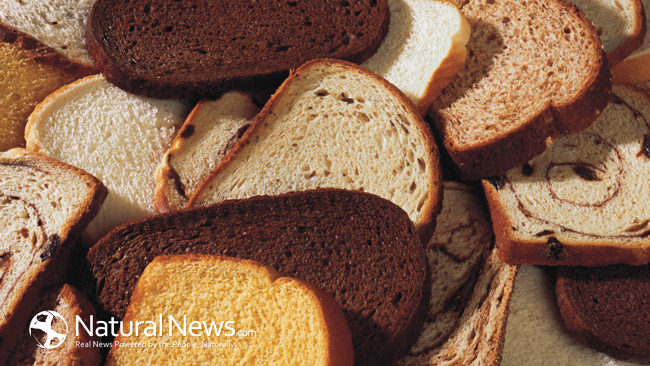Maybe you once struggled with joint and muscle pain, or perhaps chronic bloating or diarrhea. Perhaps you used to feel fatigued all the time. Everybody you knew was talking about going “gluten free,” and said how much better they felt when they did. But you hesitated—after all, bread is delicious! Could you really go the rest of your life without eating “real” pasta or pizza crusts or fresh-baked bread? You Googled it and found that all kinds of “reputable” sources said gluten sensitivity wasn’t real.
But still… could everyone you knew be wrong?
At last you just tried it, and you were amazed at how much better you felt without gluten as a staple in your diet. But that still didn’t totally make sense to you. Our ancestors have been eating wheat for thousands of years, after all!
Then maybe you went on vacation in Europe, and thought, what the heck… I’m going to eat what I want. It’s vacation! To your surprise, the Italian pasta and the French pastries caused you no problems whatsoever. You wondered if maybe you’d imagined gluten sensitivity after all… until you came back to the States and tried to maintain your new diet. Quickly, all the old symptoms returned.
So are you allergic to gluten, or aren’t you?
I’d heard this story many times from my patients before it happened to me personally. Bread is one of my favorite things, but I learned the hard way that eating gluten makes my gut very unhappy. It’s just not worth it. Yet while vacationing in Southern Ireland, the hearty brown bread served at nearly every meal looked too good to pass up. I ate it at every opportunity (it was vacation, after all)… and I felt just fine. But when I tried to eat the brown bread in Northern Ireland (part of the UK), I felt sick again. We crossed over to Southern Ireland again (part of Europe): no problems. Then in the States: sick again.
After investigating this upon my return, I found that there are three main possible causes of the disparity between gluten in the US (and the UK potentially), and gluten in Europe.
Differences in Gluten Abroad vs At Home
- Wheat has higher gluten content in the States than in Europe. In the states, our wheat is roughly 15% gluten. In Europe, it’s more like 10%.
- Conventional wheat in the US is often soaked in Round-Up prior to harvesting. Round-Up, the pesticide at the center of the GMO controversy, contains the active ingredient glyphosate. This acts as a pesticide by perforating the intestines of insects. While Monsanto, the parent company, claims that ingestion by humans is safe, the data suggests that it leads to inflammatory diseasesas well as gluten sensitivity specifically. In Europe, while Round-Up is not completely prohibited, usage is far more restricted.
- Cooking with buttermilk. I noticed many European bread recipes call for buttermilk. Buttermilk is made from introducing lactic acid bacteria to milk, which ferments the lactose into lactic acid. Lactic acid serves to break down the gluten protein, rendering the gluten content in the bread lower than it might be with other ingredients. This is the same reason why gluten sensitive individuals can often consume sourdough bread without a problem.
Can You Have Your Bread (and Eat It Too?)
If you are gluten sensitive (not Celiac) in the US, but you don’t want to move to Europe OR give up your bread, here are a few approaches to try.
- Choose 100% Sourdough. As mentioned here, sourdough pre-digests the gluten protein for you, so that most people who are gluten sensitive can eat sourdough bread without a problem. If you buy sourdough from the grocery, though, it’s likely been mixed with regular flour. The safest way to do it is to buy a sourdough starter and make your own.
- Choose sprouted grains. The sprouting process also breaks down the gluten proteins. It does not render the bread completely gluten free, but it does lower the gluten content enough that some people who are gluten intolerant can eat it without a problem. It is possible to sprout your own grains, or you can choose some of the sprouted brands already on the market.
- Choose organic wheat. The organic label means non-GMO, and no synthetic pesticides. This is a good way to avoid the Round-Up content in your wheat. While you’re at it, consider baking recipes that include buttermilk as well.
References:
- https://www.ncbi.nlm.nih.gov/pmc/articles/PMC126681/
- https://www.ncbi.nlm.nih.gov/pmc/articles/PMC126681/
- https://www.ecowatch.com/eu-bans-glyphosate-co-formulant-monsanto-1917259116.html
- https://www.ncbi.nlm.nih.gov/pmc/articles/PMC3945755/?_ga=2.220239832.1315543400.1498830070-1474313323.1478370897
- http://www.mdpi.com/1099-4300/15/4/1416?_ga=2.44225764.1315543400.1498830070-1474313323.1478370897
- http://www.extension.umn.edu/agriculture/small-grains/harvest/preharvest-management/









